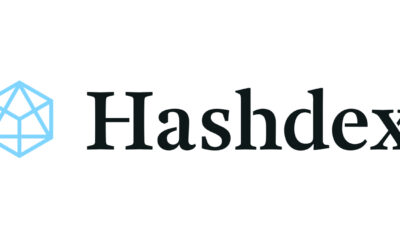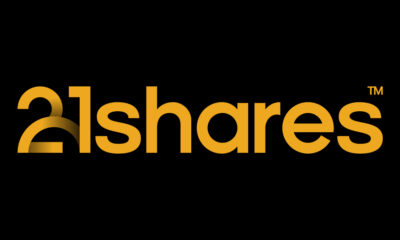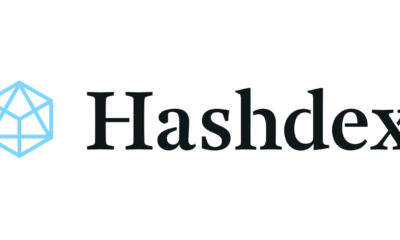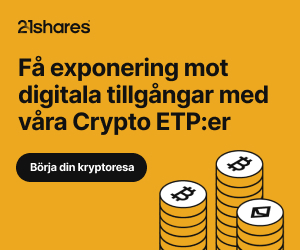Februari är nu slut, och vi har som vanligt gjort en sammanställning av de mest populära börshandlade fonderna februari 2024. Dessa månadsvisa sammanställningar är ett sätt för oss att se vilka ETFer som trendar och vad våra läsare finner intressant. Vi använder sedan detta för att skriva nya artiklar på Etfmarknaden.se.
XACT Norden Högutdelande är utan tvekan den mest populära av alla de ETFer som vi har skrivit om på vår sida. Den kvartalsvisa utdelningen och dess satsning på aktier med en låg volatilitet och hög direktavkastning gör det till en populär fond som återfinns i mångas depåer. I början av februari kom denna börshandlade fond med uppgift om årets utdelning, något som alltid skapar ett stort intresse för XACT Norden Högutdelande.
Under januari 2024 gav den amerikanska finansinspektionen SEC tillstånd för de första amerikanska Bitcoin ETFerna. Detta i samband med att priset på denna kryptovaluta har stigit till nivåer som Bitcoin inte handlats till på flera år, en effekt av just de nya börshandlade fonderna, har gjort att vi sett ett mycket stort intresse för detta på sidan.
Fonder som följer S&P 500 är, föga förvånande, en typ av fonder som det finns stort intresse kring. Det är ingen speciell enskild fond som sticker ut och lockar mer än andra.
Valour SOLANA (SOL) är en börshandlad produkt, som gör investeringar i SOL enkla, säkra och kostnadseffektiva. Solana är en decentraliserad blockchain och den snabbaste blockchain i världen, med mer än 400 projekt som spänner över DeFi, NFT, Web3 och mer.
Produkten är en en strukturerad investering i form av ett tracker certifikat enligt svensk lag. Den handlas på Nordic Growth Market (NGM) som är den primära marknadsplatsen.
Future of Defense UCITS ETF (ASWC) noterades på Londonbörsen och Deusche Börse XETRA den 4 juli där den handlas under kortnamnet (ASWC ETF) försöker spåra EQM NATO+ Future of Defense-index. EQM NATO+ Future of Defense-index spårar resultatet för företag världen över som är engagerade i militär- eller försvarsindustrin.
ASWC, som följer EQM Future of Defense Index, strävar efter att ge exponering för de globala företag som genererar intäkter från NATO och icke-NATO (NATO+) allierade försvars- och cyberförsvarsutgifter.
Vi befinner oss för närvarande mitt i det största landkriget i Europa sedan 1945. Medan det omedelbara hotet om militär konflikt mellan Ryssland och USA är lågt, utgör Ryssland och andra stater ett allvarligt och föränderligt hot mot Amerika och dess allierade. Nato är en viktig första försvarslinje.
Ethereum Zero SEK är en börshandlad produkt, som exakt speglar priset på Ethereum (ETH) utan avdrag för förvaltningsavgifter, vilket gör investeringar i världens näst största digitala tillgång enklare, säkrare och mer kostnadseffektivt än andra alternativ.
Produkten är en strukturerad investering i form av ett tracker certifikat enligt svensk lag. Den handlas på Nordic Growth Market (NGM) som är den primära marknadsplatsen.
ETF med månatliga utdelningar är något som vi sett på denna lista de senaste månaderna. Det finns flera sådana tillgängliga för svenska investerare, till exempel JPM Global Equity Premium Income UCITS ETF – USD (dist) och Global X Nasdaq 100 Covered Call UCITS ETF USD Distributing (QYLE ETF), som emellertid skiljer sig mycket åt från varandra.
Många av de besökare som kommer till ETFmarknaden för att söka information om börshandlade fonder letar efter utdelande ETFer, och dessa två ETFer har något som sticker ut från andra ETFer. Det är en av de få aktier-ETFer som vi sett där utdelningen sker månadsvis.
I december 2023 lanserade J.P. Morgan Asset Management sin JPMorgan Global Equity Premium Income UCITS ETF (ticker: JEPG), en aktivt hanterad resultatorienterad ETF-strategi som syftar till att erbjuda investerare konsekventa inkomster: 7 till 9 procent årligen, betald månadsvis och uppskattningspotential med mindre volatilitet än JEPGs respektive riktmärke.
Månadsvis utdelning är en av orsakerna till att kanadensiska aktier som till exempel Boston Pizza har kommit att bli så pass populära, då de ger utdelning varje månad. Utdelning varje månad fungerar för många investerare som ett alternativ till lön när de går i tidig pension.
En annan populär ETFen är XACT Sverige, som även denna lämnar utdelning. Till skillnad från XACT Norden Högutdelande sker utdelningen endast en gång per år. Även denna ETF meddelade att den fastställt utdelningen för 2024 under februari månad.
Global X SuperDividend UCITS ETF USD Distributing (UDIV ETF) investerar i utdelningsaktier från hela världen. Utdelningarna i fonden delas ut till investerarna (halvårsvis).
VGWD ETF, eller VGWD Vanguard FTSE All-World High Dividend Yield UCITS ETF Distributing som är dess fullständiga namn, handlas bland annat på tyska Xetra, vilket gör att det går att handla den direkt genom DEGIRO, Nordnet, Aktieinvest och Avanza. VGWD ger bred exponering mot de största företagen med högre avkastning på utvecklade och tillväxtmarknader, men utesluter fastighetsbolag. Som alla andra av Vanguards ETFer så har den en låg förvaltningsavgift, 0,29 procent. Den kan liknas vid en global variant av XACT Norden Högutdelande eftersom den investerar i högavkastande aktier från hela världen.
Fond som följer Nasdaq-100 är ett nytt begrepp på denna lista. Det är däremot inte konceptet, i princip varje större emittent på marknaden erbjuder minst en sådan ETF. Invesco som i USA har den populära fonden QQQ, erbjuder flera olika alternativ på den europeiska marknaden.
Att ordet ETF kommer högt upp ser vi som naturligt då denna sida är helt och hållet dedikerad åt börshandlade fonder, Exchange traded funds eller ETFer. Om du söker på detta ord på Google, hur högt hamnar vi då?
Magic Formula Investing hänvisar till en regelbaserad, disciplinerad investeringsstrategi som lär människor en relativt enkel och lättförståelig metod för värdeinvesteringar. Den förlitar sig på kvantitativa skärmar av företag och aktier, och är utformad för att slå aktiemarknadens genomsnittliga årliga avkastning genom att använda S&P 500 för att representera marknadsavkastningen. Enkelt uttryckt fungerar det genom att rangordna aktier baserat på deras pris och avkastning på kapital. Oss veterligen finns ingen ETF som följer denna formel, men det vore onekligen en intressant produkt.
ETF Indien är inte en specifik börshandlad fond, men förekommer i en mängd olika varianter. Det finns tydligen ett stort intresse för att investera i indiska aktier bland sidan besökare, och då är kanske en ETF ett bra sätt att göra det. Vi skrev under förra månaden en artikel om olika Indienfonder.
Den enda obligationsfonden på listan är XACT Obligation (UCITS ETF). Det är en börshandlad indexfond som följer utvecklingen av marknaden för svenska statsobligationer, säkerställda bostadsobligationer och kommunobligationer, samtliga med så kallad Benchmark-status. Fonden följer Handelsbanken Sweden All Bond Tradable Index som används som jämförelseindex av en stor del av marknadens aktörer. Fonden kan passa den som söker en bred obligationsexponering. XACT Obligation kommer med en årlig förvaltningsavgift på 0,10 procent, och har blivit mer populär när de amerikanska bankerna hamnade i problem.
Den svenska ETP-emittenten Virtune lanserade under 2023 en rad olika börshandlade produkter på både den svenska och tyska marknaden, till exempel deras Virtune Sustainable Bitcoin ETP. I samband med att dessa produkter noterades var det många besökare som sökte efter detta företags produkter, men på senare tid har ett minskat intresse för detta företags produkter. Märkligt nog är en av deras anställda, Henry M. Forelius ett sökord där vår sida hamnar väldigt högt upp hos Google. Faktum är att han är ett av de fem populära sökorden på sidan, varför vet vi inte.
Ännu en börshandlad kryptovaluta har hittat en plats på listan. Bitcoin Zero SEK ett certifikat utan förvaltningskostnader utgivet av Valour som dessutom handlas i svenska kronor på en svensk börs. Detta certifikat är en börshandlad produkt som gör det enkelt, säkert och kostnadseffektivt att investera i Bitcoin.
Ett helt nytt begrepp på listan är ETF fastigheter. Allt fler investerare tror att vi kommer att få se räntesänkningar i år, inte bara i Sverige och Europa, men även i USA. Lägre räntor gör det enklare att räkna hem en investering i fastigheter. Kan det vara så att våra besökare undersöker möjligheterna att positionera sig i en ETF för fastigheter innan räntorna sänks för att de tror att det kommer att leda till en uppvärdering av fastighetsbolagen?
Swedbank ETF tror vi kan tolkas att det endera finns intresse för att veta om Swedbank har ETFer i sitt utbud, eller om det går att handla börshandlade fonder på Swedbank. Svaret på denna fråga återfinns här.
Från och med den 14 februari 2024 kan för första gången en Exchange Traded Note (ETN) på Internet Computer (ICP), en ICP ETN, handlas via Xetra och handelsplatsen Börse Frankfurt. Utgivaren av denna ETN är Valour Digital Securities.
Med 1Valour Internet Computer Physical Staking (1VIC) kan investerare på Xetra delta i utvecklingen för Internet Computers kryptovaluta i kombination med insats för första gången utan att behöva sätta upp kryptoplånböcker. Staking är processen att deponera respektive kryptotillgångar på blockkedjan för att validera transaktioner. I gengäld betalas en premie. På detta sätt kan investerare delta inte bara i prestanda för kryptovalutan, utan också i respektive insatsinkomst.
Hang Seng är också ett nytt sökbegrepp, och det är Hong Kong börsens benchmark index. Det finns flera olika emittenter som erbjuder exponering mot denna ekonomi, till exempel Amundi och HSBC. Du hitta alla de ETFer som spårar Hang Seng här.
Tidigare var det många som sökte på begreppet ESG, men detta sökord har fallit från listan under de senaste månaderna. En variant av ESG-fond är de fonder som har en islamistisk inriktning, så kallade halalfonder., och det är fortfarande något som våra besökare letar information om. En sådan fond är ASWE, som är en aktivt förvaltad shariafond men till exempel HSBC har en serie fonder med fokus på att investera enligt islam. Det är ingen speciell enskild fond som sticker ut och lockar mer än andra.
I och med att guldpriset har rört sig uppåt har intresset för guldfonder kommit att bli mer populärt överlag. Den mest populära fonden är 4GLD, Xetra-Gold som erbjuder investerare en optimal och enkel möjlighet att delta i utvecklingen av guldmarknaden. Dessutom är handel med Xetra-Gold också mycket kostnadseffektiv eftersom den till skillnad från andra värdepapper inte kommer med varken abonnemangsavgifter eller förvaltningsavgifter.
Det finns i Europa ingen ETF som investerar enbart i uran, men det finns flera som investerar i uranproducenter, till exempel VanEck Uranium and Nuclear Technologies UCITS ETF A (NUKL ETF), HANetf Sprott Uranium Miners UCITS ETF Acc (U3O8 ETF) och Global X Uranium UCITS ETF USD Accumulating (URNU ETF).
Det går att handla andelar i dessa ETFer genom de flesta svenska banker och Internetmäklare, till exempel DEGIRO, Nordnet, Aktieinvest och Avanza.
WisdomTree Europe Equity Income UCITS ETF (WTEE ETF) försöker spåra pris- och avkastningsutvecklingen, före avgifter och utgifter för WisdomTree Europe Equity Income Index EUR.
VanEck Morningstar Developed Markets Dividend Leaders UCITS ETF (VDIV ETF) ger en attraktiv regelbunden inkomst genom aktier. Med räntorna fortfarande nära historiska låga, söker Morningstars globala analysföretag de 100 bästa inkomstbetalarna globalt, utvalda för deras utdelningsavkastning, motståndskraft och sannolika tillväxt.
Listan avslutas med HBAR, en börshandlad produkt som inte ens har hunnit lanseras ännu. I slutet av januari kommunicerade Valour att företaget hade för avsikt att lansera en fysiskt uppbackad börshandlad produkt (ETP) Valour HBAR Staking ETP i samarbete med The Hashgraph Association (THA) – en schweiziskbaserad produkt oberoende och ideell organisation fokuserad på att ge en digital framtid för alla genom att utnyttja Hederas miljövänliga distribuerade ledger-teknologi (DLT)
Lanseringen har ännu inte skett, men vi är övertygade om att vi ser denna inom kort. Om den kommer att handlas under kortnamnet HBAR är ännu inte kommunicerat.
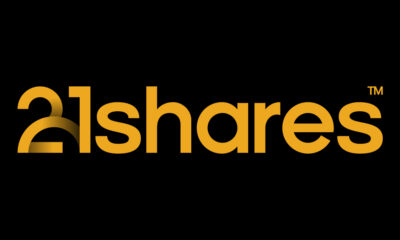
 Nyheter4 veckor sedan
Nyheter4 veckor sedan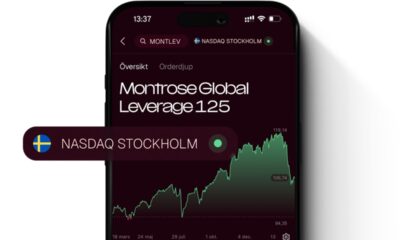
 Nyheter3 veckor sedan
Nyheter3 veckor sedan
 Nyheter4 veckor sedan
Nyheter4 veckor sedan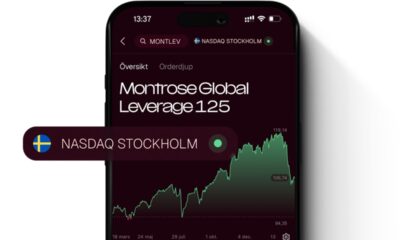
 Nyheter3 veckor sedan
Nyheter3 veckor sedan
 Nyheter3 veckor sedan
Nyheter3 veckor sedan
 Nyheter3 veckor sedan
Nyheter3 veckor sedan
 Nyheter3 veckor sedan
Nyheter3 veckor sedan
 Nyheter2 veckor sedan
Nyheter2 veckor sedan




